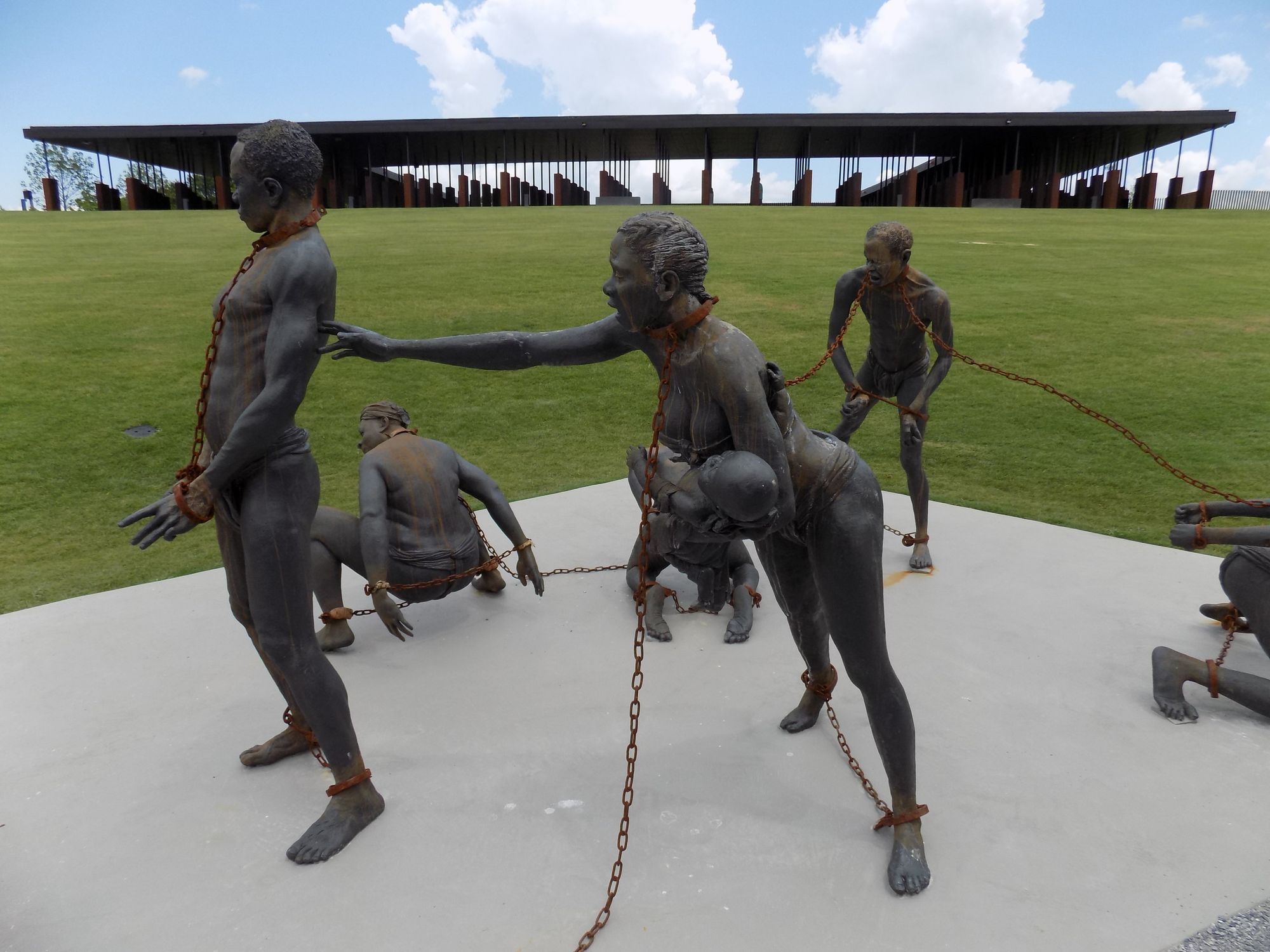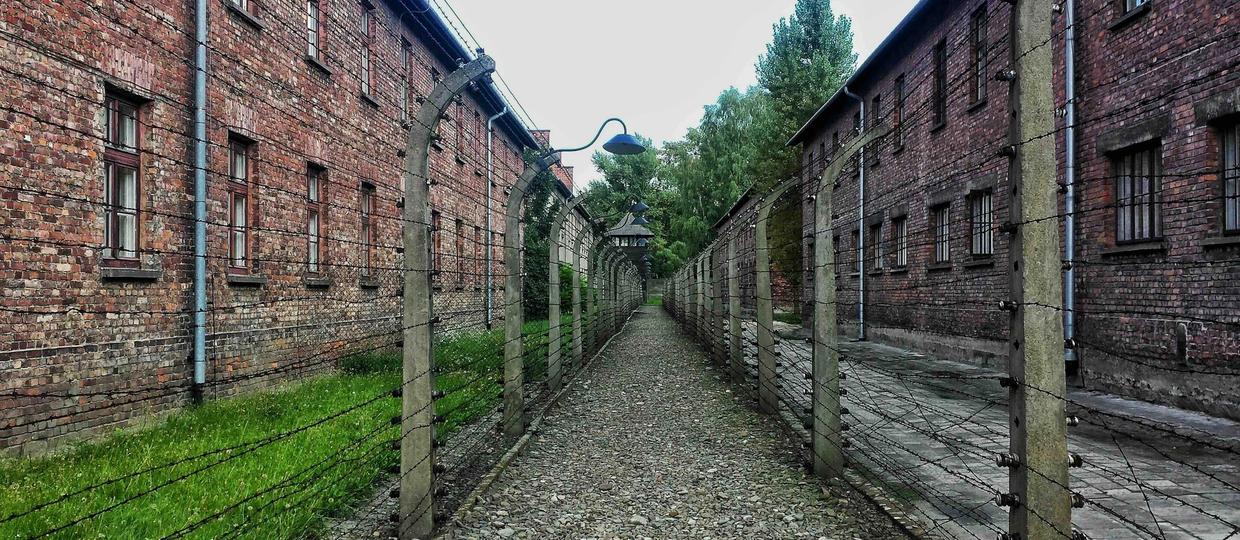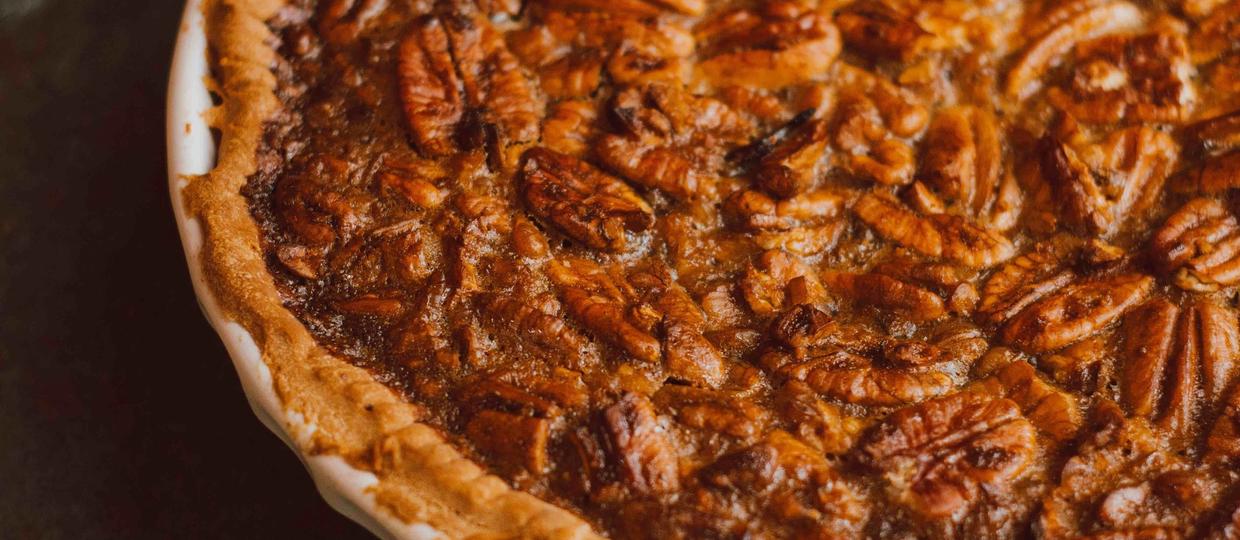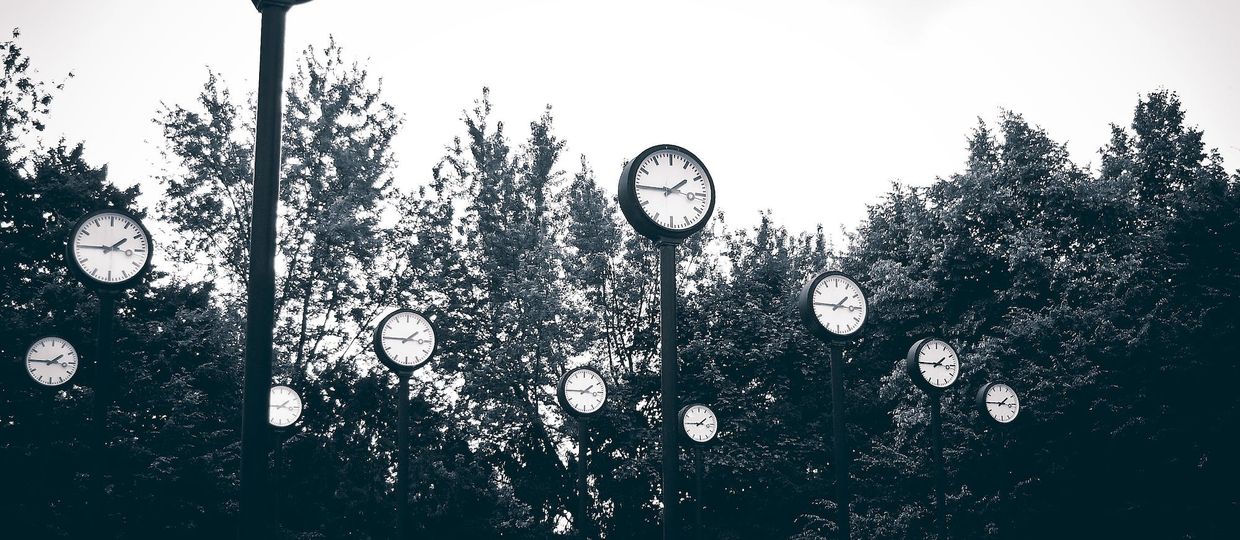Museums, Monuments, and Memorials
Hope and history are often at odds, the past revealing all the wrongs we are likely to do even in the face of the so-clear-in-hindsight correct answer.
This month of February, when the country returns for a time to the histories of those it enslaved not more than 200 years ago, my mind returns to the first time I walked through a symbolic rendering of that history made concrete through glass and steel and decades of lobbying.
The National Museum of African American History and Culture (NMAAHC) opened in Washington D.C. in 2016, four years after construction began and 13 years after the proposal for such a museum passed federal legislation. This legislation came more than a decade after Representatives John Lewis and Micky Leland tried and failed to get approval for such a project through Congress.
Their efforts shouldn't suggest that there were no museums on African-American history before this one. Hundreds were created by private entities and cities long before the NMAAHC efforts passed. But a museum instituted by a “nation” has a certain authoritative weight, representing a country’s collective agreement of value, the political belief that the focus of the building is important to the identity of that nation. For example, while the NMAAHC was struggling to obtain legislative support, Americans had already created national museums to acknowledge the importance of the Postal Service (National Postal Museum, 1993) and the atrocities committed in other countries (United States Holocaust Memorial Museum, 1993).
I first visited the NMAAHC two years after its opening, and even then, it was still incredibly popular. I had to check the associated website at 6:30 AM, the exact time the tickets were released, to ensure my sister and I could attend later that afternoon. The day before I had been 10 minutes late, and by then the day’s tickets were already gone.
That the museum garnered so much interest is a testament both to the pent-up demand for such an institution and to its quality.
My sister and I started on the bottom floor, which presented the history of Africans in the Americas from 1400 to 1877. I remember thinking that many of the contents of this museum were “great” in the way works of literature or sculptures can be: They were large, disturbing, and constantly demanded of the audience a level of attention and emotional investment which was exhausting. As we snaked our way through the corridors of artifacts and poster descriptions, I found myself getting ever more tired, almost wishing to speed through it all and reach the end.
I had known the vague outlines of the history of this period, but it amounted to a different knowledge altogether to see in front of me the slave collars and muskets of the time. The horrors wrought by the founders of the country were laid bare, and more than ever, I felt the internal contradiction of feeling thoroughly American and not liking America.
<><><>
For much—most?all?—of America’s history, the country promulgated the idea of equality while codifying the notion that some people were more equal than others. And most of the country’s citizens were rather accepting of this selective definition of equality, provided it kept them above (if only ever so slightly) the lowest place in the social hierarchy.
The people who might have been disturbed by this contradiction were often not sufficiently so to motivate action or were too economically disenfranchised to be able to do so. Moreover, ever before its birth as a new nation, this country had taken steps to establish hierarchies within the socially and economically disenfranchised, giving a modicum of social respectability to those who in other lands had none. Thus, ironically, often the most virulent forms of racism came from those parts of the white population most intimately aware of marginalization.
And yet my 7th-grade history teacher had the temerity to tell students that the American Civil War was not “about slavery” but rather was a contest between federal overreach and states’ rights. This claim was made in the face of the subsequent history of the South’s instituting of Black codes to circumscribe the public mobility of black people, in the face of the Dredd Scott decision, the creation of the KKK, and the hundred-year history of Jim Crow laws. For a war that was decidedly not “about slavery,” much of the aftermath of that war seemed focused on returning black people to the status of slaves.
But my history teacher was born in Louisiana, a man of the South, and perhaps he was taught an interpretation of the region’s history that was meant to minimize the moral crimes of its past. It is a common approach to history, one meant to preserve a citizenry’s pride in its lands and people, but actually destabilizes that pride by grounding it in a false accounting of the world.
It is an account that echoes to this day, most recently in this country's discussion about the Confederate monuments and whether they should be removed from their hundreds of outposts across the country. To most of those who wished the monuments to stay, these figures of stone were never supposedly about canonizing those who fought for the preservation of slavery but about Southern pride, about preserving autonomy and a unique culture and sense of life. A historical review of exactly when these monuments were erected belies this attempt to sanitize them, but to those for whom black people were always peripheral, it is not surprising that said black people reside so deeply in the background that a conflict primarily about them could be seen to have nothing to do with them at all.
I first heard about the efforts to remove the monuments many years before I visited the NMAAHC. I was on the side of those who wished the monuments to remain, though for different reasons. I discussed the issue with someone at a meeting of graduate students. Me and my interlocutor were on opposing sides. I saw the removal of the monuments as an escape from history, an escape from shame, a way to bury the bodies after a slaughter and pretend that the slaughter had never happened. He saw it as a renunciation, as a way to stop deifying the people and ideas that fought for the reduced identities of others.
To an extent, I agreed with him, but I also knew that if there was one thing that Americans were quite adept at, it was pretending that the darker parts of their past belonged to someone else and that their lineages could be chopped up into largely disconnected blocks with the decisions of a society 100 years ago having no bearing on the society that exists today. With the monuments gone this would be easier to do, and I was against anything that made a disavowal of that past easier. I wanted our shame to be clear for us and everyone else to see because I believed that with it hidden, we would never truly move beyond it.
<><><>

I still believe in the power of shame to motivate accountability, both for an individual and for a community. Thus, I am partial to historical monuments that put shame on full display, which remind us constantly what we are capable of and connect us to history in ways an admirable desire for a clean slate cannot. The NMAAHC contains many such monuments. So does a plot of land maintained by the Equal Justice Initiative (EJI) in Alabama. In my memory, I think of this plot as the “The Lynching Museum,” but it is a memorial. There are no objects from history here. Just symbols of past pain, legacies of a previously normalized and now abstracted evil made concrete for all today.
The formal name is The National Memorial for Peace and Justice. I visited the memorial in the same year I first visited the NMAAHC, and this was also the year the memorial first opened. When you enter it you are not yet confronted with the structures which are its main draw. Instead splayed on thin wooden columns framing the side of an entryway is a quote by Martin Luther King Jr.:
“True peace is not merely the absence of tension; It is the presence of justice.”
Walking beyond this, one sees a large raised green space in whose center is the main memorial. On the path leading up to it, there are six statues of men and women in various states of despair. They are all shackled together and nearly naked. One woman holds a baby and, with a forlorn grimace, reaches out a hand to a man who is the only one standing fully upright amongst the six. He does not seem to see her and instead stares intently at something a few yards in front of the group.
There are historical summaries on the large wall next to these statues and continuing beyond them.
"Efforts in Congress to provide federal protection to formerly enslaved black people were undermined by the United States Supreme Court, which overturned laws that provided remedies to black people facing violent intimidation."
...
"From 1877 to 1950, millions of black Americans were targeted by racial terror lynchings. Over 4,400 lynchings of African Americans by groups of two to over 10,000 white people have been documented."
Getting to the end of this wall, one at last encounters the symbol which will be repeated until one leaves the memorial: A brick obelisk the size of a coffin with the names of the dead carved in the center of one face. These large stones are initially arranged in rows on the ground, each one depicting one or multiple lynchings from a particular county or parish in a U.S. state. As one enters the covered part of the memorial, the obelisks move to the ceiling hanging down low enough so that one can still clearly read and touch the carved names and locations. On the symbols themselves, there are no explanations for what has befallen these people. Just a litany of death. What explanations one does get are pasted to the bottom of long black strips on the walls abutting the space.
“Charlotte Harris was lynched in Rockingham County, Virginia, in 1878 after a white man’s barn burned down.”
“Arthur Jordan was lynched in Warrenton, Virginia, in 1880 for eloping with a white woman.”
“George Briscoe was lynched in Annapolis, Maryland, in 1884 for an alleged robbery.”
“Seven black people were lynched near Screamer, Alabama, in 1888 for drinking from a white man’s well.”
All of the explanations are short. All of them are unsatisfying. Perhaps this is fair. No amount of words or depth of reasoning could justify what one knows was born of something not purely rational. And even if one were to attempt such a hopeless task, beneath the reams of paper and analysis would exist a simple reality that represents the truth of the condition of these people: They lived in a society that did not want them, that did not respect them, and that sought to remind them of this at every opportunity.
As you spiral inward through the memorial, the hanging coffins rise in height, or they at least appear to. In fact, the floor falls away in an almost imperceptible slope. As you walk, you find yourself somehow receding from the thing that was once ever present. The obelisks which could be touched and easily seen when you first entered gradually become more remote and harder to engage with as physical objects. Perhaps at such a point you can delude yourself into believing that they are far enough away that they cannot affect you. But this would be a lie. You are surrounded though you cannot see it. They hang above you like the Sword of Damocles multiplied, both burden and warning.
<><><>
We cannot escape our shadows, and they only grow larger the closer we get to dusk. One hopes that long before these shadows stretch into the parts of our lives we believed they could not touch, we will, at last, acknowledge them, and we will then seek some corrective light before the night consumes us all. But hope and history are often at odds, the past revealing all the wrongs we are likely to do even in the face of the so-clear-in-hindsight correct answer.
For me, seeing the history of slavery symbolized in stone and artifacts did not induce an awakening for I had not been asleep—the history, as I said, was known in some form—but there was a change, something bubbling forth from the periphery and revealing itself to be the thing towards which I should have been looking all along.
Both the EJI Memorial and the NMAAHC revealed to me that I was wrong about the Confederate monuments. I was willing to accept the canonization of Confederate generals so long as these monuments also reminded some of us of a past that was still with us. But the memorial and the museum show that there are ways to remember and acknowledge the past without deifying those who perpetrated its evils. And there is a way to allow past shame to be a lesson without it being an all-consuming indictment of who we can ever be.
My fear concerning the Confederate monuments was that the physical structures would come down without a concomitant fall in their less material counterparts. That people would believe that simply because the symbols were gone then the attitudes that had led to them had vanished as well. I feared that we would all conveniently forget who we had been in the apparent light of who we now desperately wanted to believe we were.
The ultimate result of such amnesia is expressed in a quote in the NMAAHC:
"Evil forgotten is evil reborn"
It is not a coincidence that the NMAAHC and the EJI Memorial were erected largely within the same decade that most of the Confederate monuments were removed. The NMAAHC was created by a public institution, and the memorial was made by a private one, but together they suggest that people in this country have found ways to remember the past without hiding away its terrible parts. It took a long time to get here, and this fact alone suggests there is a long way to go, but at least steps have been made.
And I am glad that these somber and solid remembrances of the past exist, particularly because so many believed such things to be unnecessary.
Racism for so long has been central to the social and economic infrastructure of the nation, and it may take longer than the duration of slavery before the continent can make an uncomfortable (but ultimately freeing) peace with this knowledge. But there are some who so wish we were already at this final place of freedom that they are willing to pretend that we have already arrived, and perversely will likely be the very reason we may never get there.
And so what remains are the same fundamental themes that we seem incapable of escaping. The Civil War was supposedly never about black people, but really about autonomy and preventing government overreach, and black people only happened to be good archetypes through which to represent the conflict.
In the same way, all of the modern struggles of the descendants of those people again have nothing to do with what has been done to them, because in the country that exists now, the superficial markers of identity are no longer barriers to social acceptance or economic success.
But the question of how identity and history intersect is not a trivial one, and the question of hierarchy is familiar to us all. We can only pretend these things are irrelevant at the cost of hiding from ourselves the parts that we find distasteful. Such hidden parts always return, but do so having changed, the years in the dark having grown and contorted them into ugly shapes that can no longer be repaired by being exposed to light. And of course, when the time of that exposure comes, we, having long ago forgotten what we had created and only partly disavowed, will be unprepared to deal with what has now returned to us.
<><><>
Send any comments or questions about the work to contact@perturbations.org.



